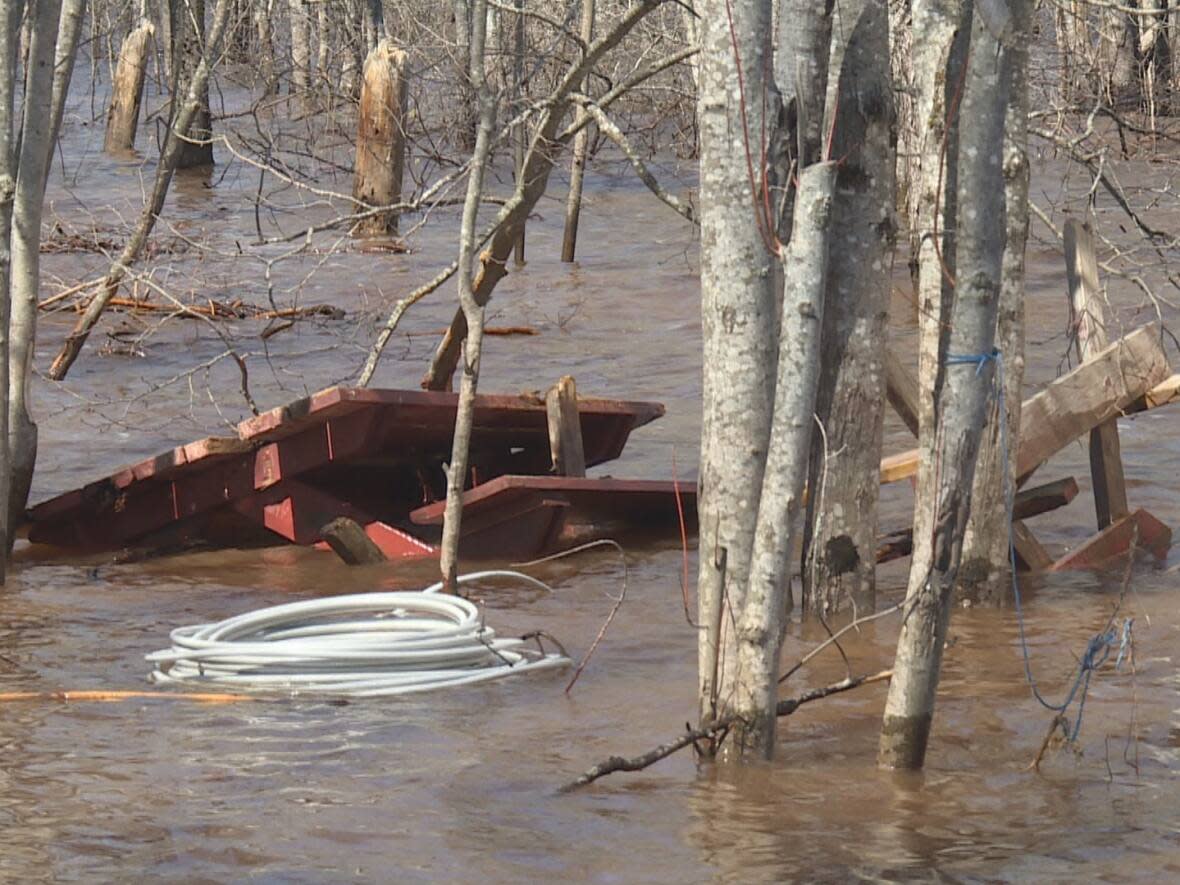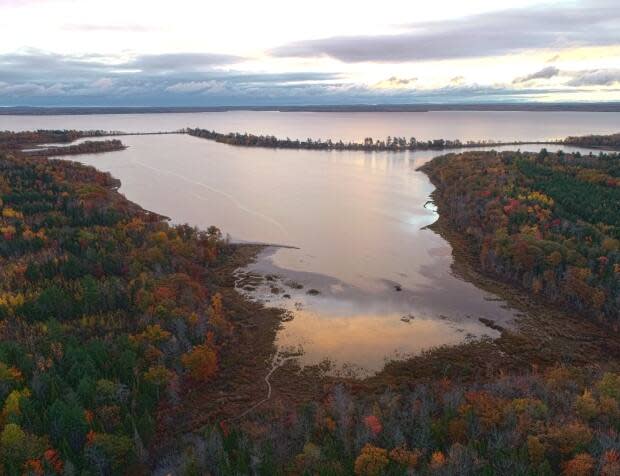700 kilograms of old flood debris found in Grand Lake-area woods

Caroline Blakely and 13 other volunteers found a fridge tangled about 300 metres deep in the woods, along with children's toys, fishing poles, roofs, water heaters and lumber on the west side of Grand Lake.
The garbage was likely from floods in 2018 and 2019, where unprecedented water levels destroyed homes and displaced more than 1,100 residents along the St. John River and nearby lakes.
Some residents claimed items that turned up in the cleanup led by the Nature Conservancy of Canada over the weekend in what is called the Keyhole property, behind Princess Park. The rest was hauled to a landfill.
The land trust recently acquired the 173-acre property and wanted to clean up debris that washed up onshore or was scattered in the woods during the floods.
The land is also home to rare bur oak trees and marshland. There are only eight known populations of bur oak remaining in New Brunswick.
"So we really want to make sure that the trees have the best environment possible to grow and to flourish in our property," said Blakely, one of the lead organizers of the cleanup.
Aaron Dowding, the New Brunswick stewardship manager of the Nature Conservancy of Canada, said that this particular area is only one of two protected bur oak groves in the forest.
"We've lost much of what we used to have and what we do have. Some of the trees are 400 years old and are a really unique floodplain forest," she told Shift New Brunswick.

The marshlands in the area are also important, especially in an area that has a tendency to flood, he said.
"It allows that land to act like a sponge and retain some of those waters that would normally inundate the property that was developed. So it's really important to keep those."
Volunteer Gloria Beyeler is originally from Nova Scotia, but has a cottage in the area and a passion to help preserve nature in that area.
"It was very exciting to me to be involved in, you know, helping to preserve that and clean it up. It's just fun to be part of something that's in your own backyard."
To prepare for the cleanup, a team of interns from the Nature Conservancy of Canada used a mapping system to place points on a map with co-ordinates to pieces of garbage beforehand to make it easier for volunteers to know where they could help out.
Blakely said one of the reasons she helped organize the cleanup was that she knew how detrimental the floods in 2018 and 2019 were.
"I think particularly where we were letting people take anything they wanted from it was a great part. It was nice to see some people who got excited about finding things or even just the potential of finding things that could have been theirs from the flood."
Blakely said she lost photographs and the roof of her cottage in the flood, so every year she takes extra precautions.
"Every fall we go in and we take all the pictures and everything down, the really sentimental stuff, because I mean, you can always replace furniture, but you can't replace some of the pictures and the memories that are there."
The Nature Conservancy of Canada plans to do another cleanup again next summer to pick up the rest of the garbage.
"There's still a lot to do in there. So lots of things to remove, some bigger things that just don't belong in the woods," said Blakely.


